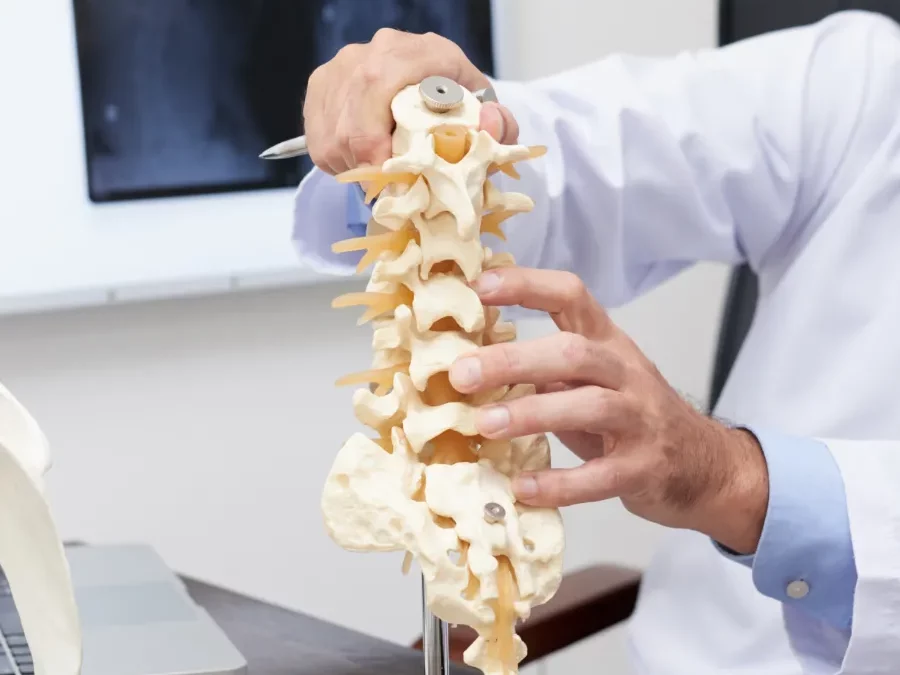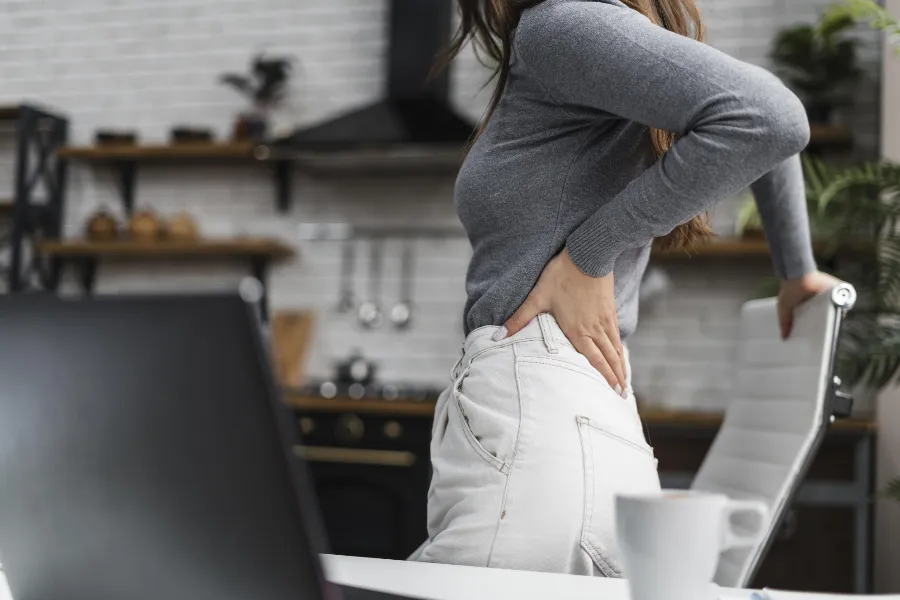Understanding Thoracic Back Pain: What Is It?
Thoracic back pain, a common condition affecting the thoracic spine—the area between the bottom of the neck and the lower back—is often characterized by discomfort in the middle and upper back. This part of the spine, comprising 12 vertebrae, is crucial for structural support but is susceptible to pain from various sources. Factors like spinal misalignment, muscle tension, and poor posture can all contribute to thoracic spine pain. Recognizing the unique nature of this pain is the first step towards effective treatment.
Common Causes of Thoracic Back Pain
The causes of thoracic back pain are diverse. They range from physical factors like poor posture, leading to muscle strain and tension, to more clinical conditions such as compression fractures or disc degeneration. Sometimes, pain in the thoracic spine can stem from underlying conditions like arthritis or spinal curvature disorders. Understanding these causes is pivotal in identifying the best treatment for thoracic back pain.
Symptoms to Watch For
Thoracic spine pain symptoms extend beyond simple back discomfort. Patients may experience a reduced range of motion, a feeling of tightness in the upper back, or even referred pain in the chest area. In cases where the spinal cord or nerve roots are involved, symptoms could include neurological signs like tingling or weakness in the arms or legs.
How Chiropractic Care Can Help
Chiropractic care is a holistic and non-invasive approach to treating thoracic back pain, which can often be interconnected with issues in other areas of the spine, such as the cervical (neck), lumbar (lower back), and low back regions. It is not uncommon for thoracic spine issues to cause pain or discomfort in these areas, leading to a complex web of pain symptoms, including neck pain and lower back pain.
Chiropractors understand that the spine is a single, interconnected unit. Therefore, pain in the thoracic region can have cascading effects, potentially causing pain or discomfort in the lower back or cervical areas. For instance, a misalignment in the thoracic spine can lead to compensatory changes in posture, which in turn can place undue stress on the lumbar and cervical regions. This can cause pain not only in the thoracic spine but also in the neck and lower back.
A chiropractor will assess the entire spine to determine underlying cause and if thoracic back pain is the primary issue or a symptom of problems elsewhere in the spinal column. For example, persistent lower back pain may sometimes be linked to issues in the thoracic spine, such as poor posture or muscle imbalances. Similarly, neck pain can sometimes be a secondary symptom of thoracic spine issues, especially if there’s a misalignment or tension in the upper back that places stress on the cervical spine.
The treatment process often includes spinal adjustments, which aim to realign the spine, relieve pressure on nerves, and improve overall spinal function. These adjustments can be particularly effective for pain that includes symptoms like stiffness or reduced range of motion, often seen with thoracic spine issues.
In addition to spinal adjustments, chiropractic care may incorporate other techniques like soft tissue therapy, stretches, and exercises specifically tailored to address the individual’s condition. These techniques can help alleviate pain in the thoracic region and associated areas, improve flexibility and posture, and strengthen the muscles supporting the spine.
This comprehensive approach ensures that not only is the thoracic spine pain addressed, but also any related issues in the cervical, lumbar, and lower back areas. By treating the spine as a whole, chiropractic care aims to provide a long-term solution to pain management, helping patients maintain a healthy, active lifestyle free from chronic pain.
The Role of Physical Therapy
Physical therapy, integral to the management of thoracic spine pain, involves targeted exercises and stretches. These not only alleviate current pain but also bolster the back’s strength and flexibility to prevent future issues. A physical therapist will tailor exercises to each patient’s specific needs, enhancing the efficacy of chiropractic adjustments and promoting long-term spinal health.
Advanced Treatment Options
For severe or chronic thoracic spine pain, advanced treatments like epidural steroid injections, facet joint injections, or even spinal cord stimulation might be necessary. These are typically considered when initial treatments like adjustments and physical therapy have not provided sufficient relief, and are always performed under careful medical supervision.
Importance of Posture and Ergonomics
Improper posture is a significant contributor to thoracic back pain. Chiropractors emphasize the importance of maintaining good posture, especially for those who sit for extended periods. Ergonomic adjustments in the workplace and at home can significantly reduce stress on the thoracic spine, aiding in both prevention and treatment of pain.
Home Remedies and Lifestyle Changes
Home remedies like applying heat or cold packs can provide immediate pain relief. Lifestyle changes, such as engaging in regular exercise, practicing yoga or pilates for core strengthening and flexibility, and maintaining a healthy weight, play a crucial role in managing and preventing thoracic spine pain. These measures, combined with professional chiropractic care, create a robust defense against recurring back issues.
When to See a Chiropractor
Persistent thoracic back pain, especially if it interferes with daily activities or worsens over time, warrants a visit to a chiropractor. Early intervention can lead to more effective treatment, helping avoid the progression to more severe conditions.
Thoracic Pain Management: A Holistic Approach
Effective management of thoracic spine pain often requires a holistic approach. This includes a combination of chiropractic adjustments, physical therapy, lifestyle modifications, and in some cases, medical interventions. The goal is not just to alleviate pain but to address the root cause and promote overall spinal health.
Key Takeaways
- Thoracic back pain can be caused by a variety of factors, including posture, injuries, and underlying spinal conditions.
- Chiropractic care, complemented by physical therapy, offers effective, non-invasive treatment options.
- Early and proactive treatment is crucial for managing thoracic back pain.
- Lifestyle changes and home remedies play a vital role in pain management and prevention.
- Hanson Chiropractic & Massage specializes in providing personalized care for thoracic spine pain relief.
Book an Appointment for Expert Care
Struggling with thoracic spine pain? Don’t let it hold you back. Reach out to Hanson Chiropractic & Massage in North Seattle for a comprehensive evaluation and a customized treatment plan. Schedule your appointment today and take the first step towards a pain-free life.







